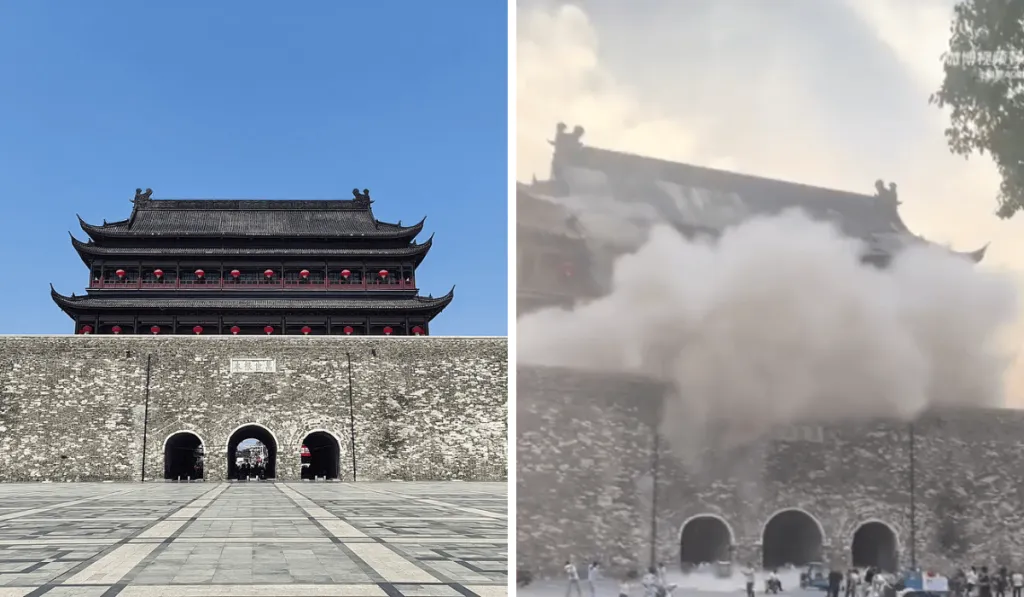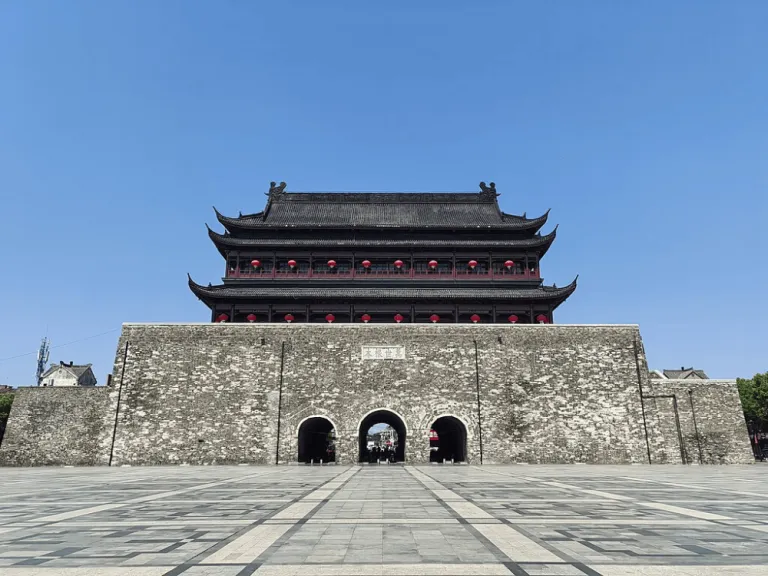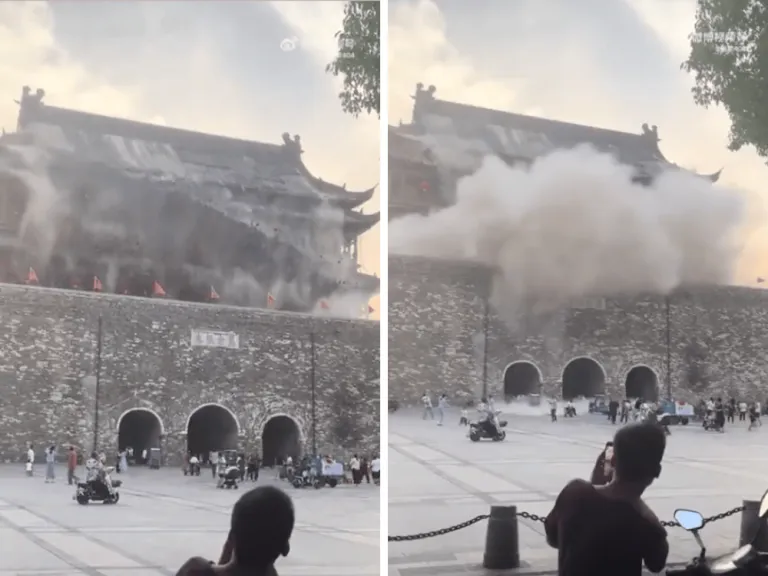The promise of new flavours beckons from Banawe.
Ming Dynasty Drum Tower Collapses in China: Is It Still Safe to Visit?

It was an ordinary Monday evening in Fengyang County, Anhui Province when something truly unexpected happened. Part of the roof of the historic Fengyang Drum Tower collapsed, just narrowly missing visitors who had come to admire this centuries-old marvel. Built in 1375 during the Ming Dynasty, the tower has stood as a proud symbol of Chinese heritage for more than 600 years. For many Filipino travellers who are passionate about culture and history, this structure has long been a must-visit when exploring eastern China.
The incident occurred at around 6:30 PM local time. Hundreds of roof tiles crashed to the ground, startling onlookers. Luckily, the square was nearly empty, and no injuries were reported. Eyewitnesses described hearing a sharp, crisp sound as the roof tile collapse echoed through the area. Videos of the Drum Tower collapse quickly spread online, shocking history buffs and travellers around the world.
Also read: China Expands Visa-Free Access: 9 New Countries Added for 2025
A symbol of the Ming Dynasty’s legacy
 Fengyang Drum Tower | Yumeto via Wikimedia Commons
Fengyang Drum Tower | Yumeto via Wikimedia Commons
This ancient Chinese tower, known as one of the largest drum towers in the country, has deep roots in China's imperial past. It was originally constructed to signal time and mark significant ceremonial events. Over the centuries, it has become one of the most visited tourist attractions in China, particularly among travellers interested in Ming Dynasty architecture.
The structure’s base dates back to the original Ming era, while the upper sections were rebuilt in 1995. Just last year, the tower underwent renovations to address minor roof damage. Repairs that are now under investigation. Authorities from the Culture and Tourism Bureau are reviewing the design and construction of the project to determine what went wrong.
Historic Fengyang: Home of the Hongwu Emperor
 Image credit: Shanghai Daily via X
Image credit: Shanghai Daily via X
Beyond the tower itself, Fengyang County holds national importance as the hometown of Zhu Yuanzhang, the Hongwu Emperor, who founded the Ming Dynasty. This makes the region a prime destination for cultural travellers. Its connection to imperial China makes it a significant stop for anyone eager to learn more about the country’s dynastic history and traditions.
Today, the Drum Tower site has been closed to the public for safety inspections and repairs. No official reopening date has been announced. Meanwhile, experts and engineers have been brought in to support damage assessment and oversee restoration efforts.
Also read: Xishuangbanna: China’s Tropical Paradise Now Visa-Free for Filipinos
A reminder for Filipino travellers
For Filipino tourists dreaming of uncovering Asia’s historic treasures, the incident at the Fengyang Drum Tower is a powerful reminder that even the most enduring landmarks are vulnerable. While it’s disheartening to see such a beloved Chinese historical site damaged, the swift response and absence of injuries offer some reassurance.
If you’re planning to explore China’s cultural heritage sites, it’s essential to stay updated on restoration efforts and site developments. Travelling isn’t just about checking destinations off a list—it’s about engaging with the stories, challenges, and enduring legacy behind each site. After all, history doesn’t live only in books; it comes alive in the very places we step into.
Published at
About Author
Jennylene Dela Cruz
Subscribe our Newsletter
Get our weekly tips and travel news!
Recommended Articles
10 Best Banawe Restaurants for a Mouthwatering Food Trip in QC 10 Commandments for Responsible Travel Flexing Spread the good word!
10-day Christmas and New Year Japan Trip: Complete Travel Itinerary Celebrate Christmas and New Year in Japan with this 10-day holiday vacation itinerary packed with Tokyo lights, Kyoto charm, and Osaka adventures.
Top 10 Post-Breakup Destinations for Healing and Self-Rediscovery Ready for a solo travel?
10 Tips for Planning Out-of-Town Trips During Typhoon Season Stay safe and travel well during the rainy season.
Latest Articles
Manila’s New Philippine Biodome Opens: Attractions, Tickets, and What to Expect Aurora Borealis in Manila?! Yes, even small-clawed otters, parrots, scarlet ibis, and other beautiful wildlife can be seen in Manila's Philippine Biodome! Read in full to see ticket prices.
Trump to Ban Obese Immigrants and Special Needs Children from U.S. Trump soon to ban fat people and kids with special needs from entering U.S.
Google Pay Launch in the Philippines Lets Everyone Pay Securely, Filipino Travellers Benefit Most Tap to pay securely
Why Filipino Travellers Are Choosing eVisas Over Traditional Visa Applications How digital visas make travel easier
Fhukerat Offloaded in Dubai: What Travellers Must Know About UAE Entry Rules Why a Filipino vlogger was refused entry and what travellers should know before visiting Dubai.

